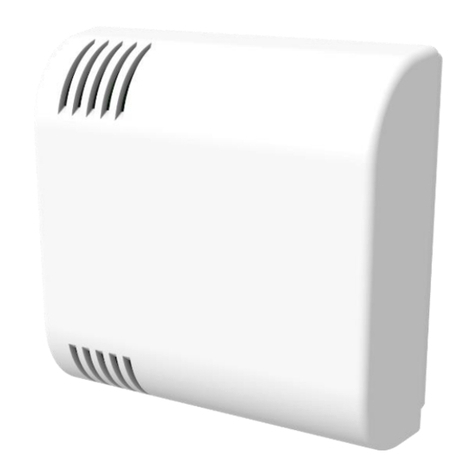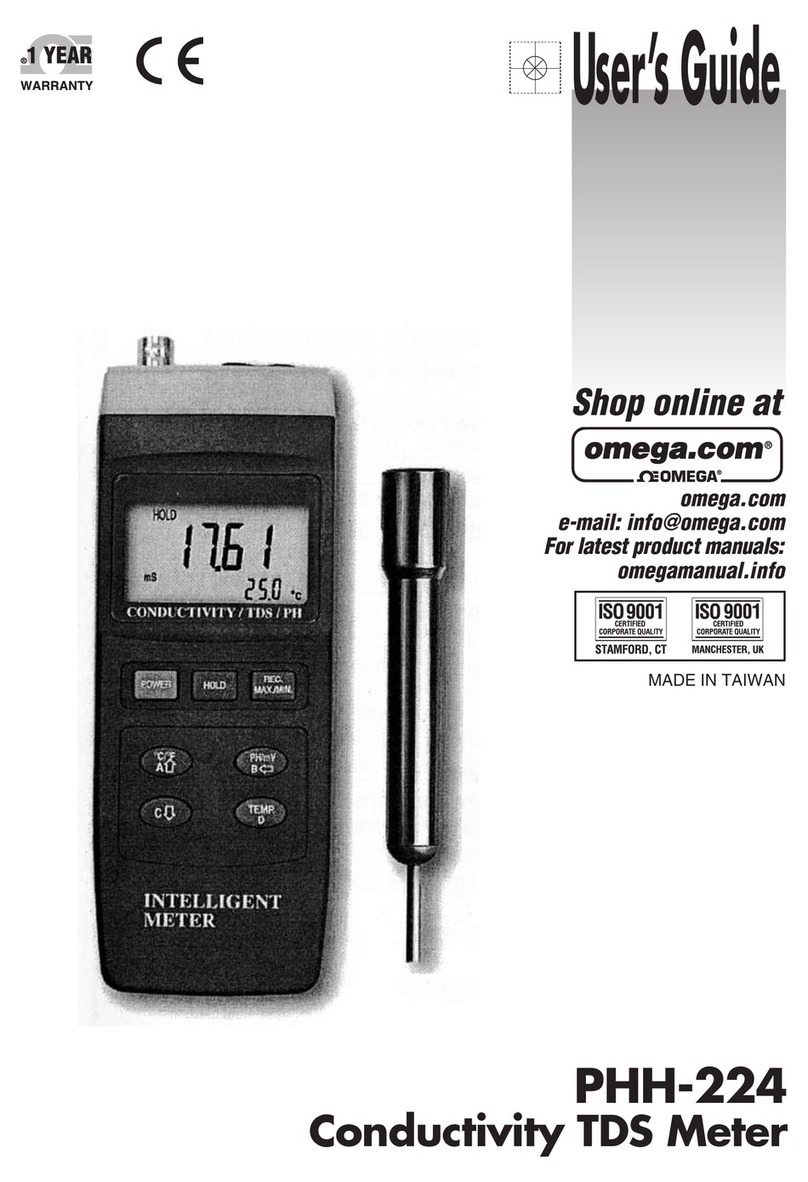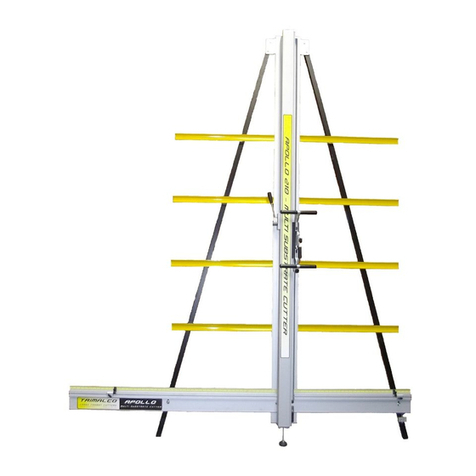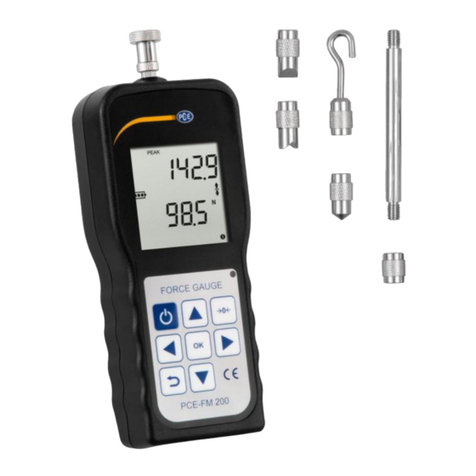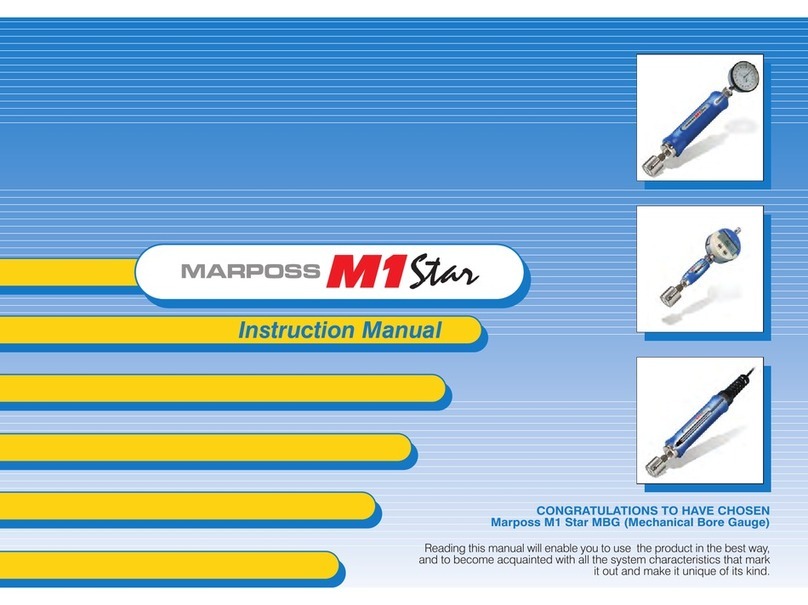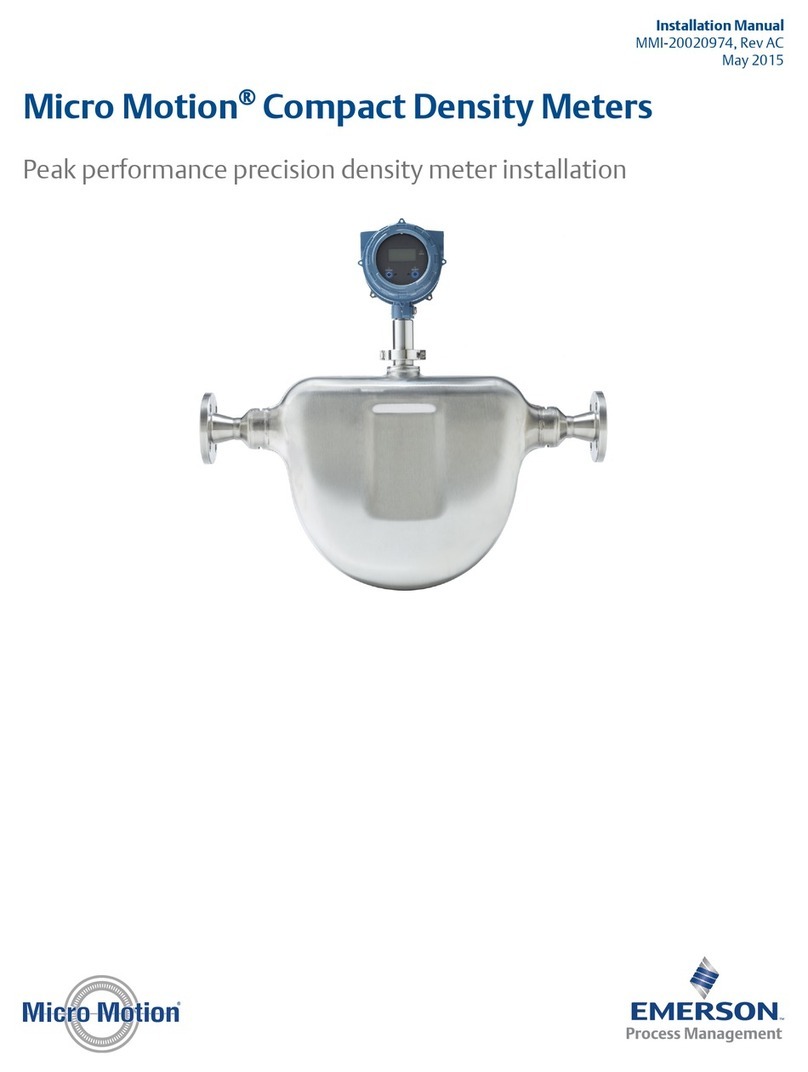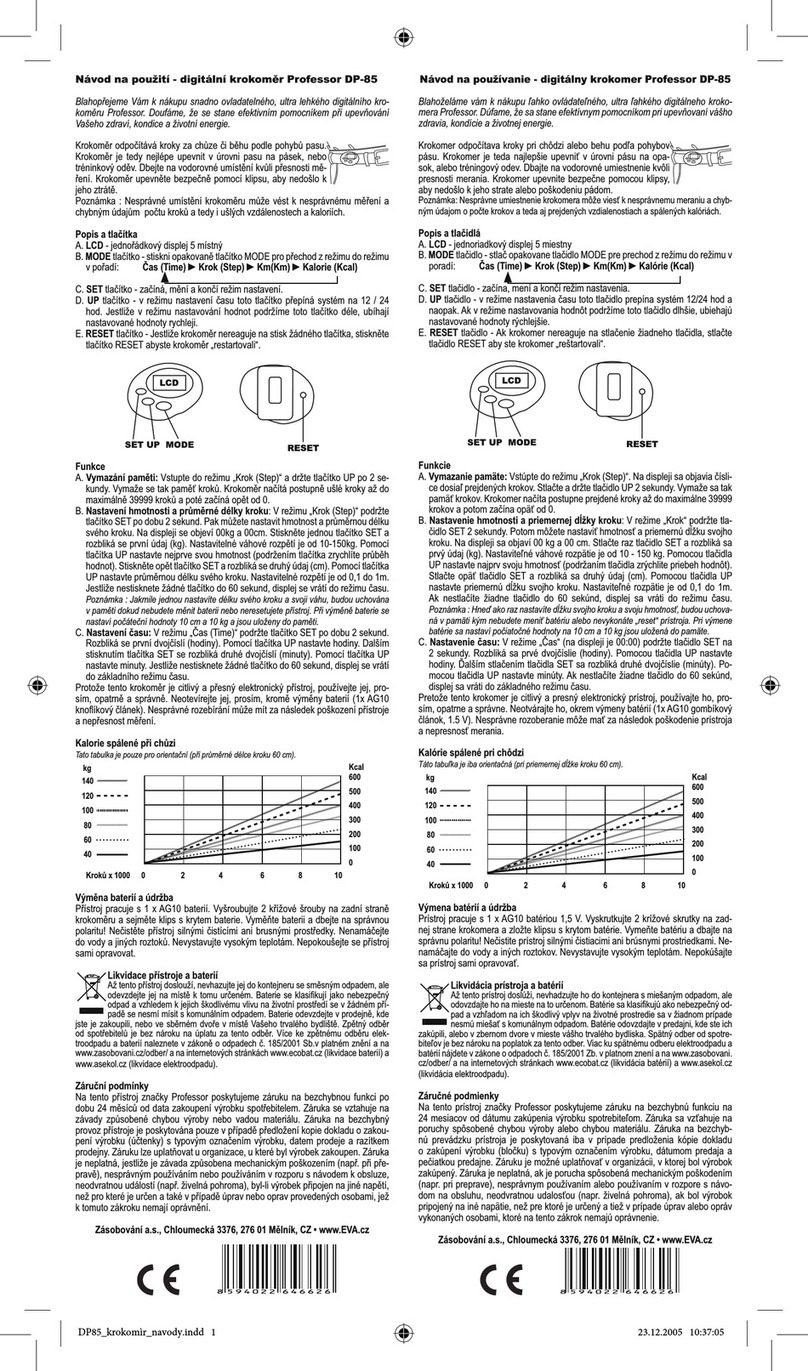DATA PRECISION 938 User manual

Instruction
Manual
for
MODEL
938
Hand-Held,
Pocket-Portable
3
1
/2
Digit
CAPACITANCE
METER
Publication
No
42-5124
■□ATA
PRECISION

42-5124
MODEL
938
PROPRIETARY
NOTICE
The
information
contained
in
this
publication
is
derived
in
part
from
proprietary
and
patent
data
of
the
Data
Precision
Corporation.
This
information
has
been
prepared
for
the
express
purpose
of
assisting
operating
and
maintenance
personnel
in
the
efficient
use
of
the
instrument
described
herein.
Publication
of
this
information
does
not
convey
any
rights
to
use
or
reproduce
it
or
to
use
for
any
purpose
other
than
in
connection
with
the
installation,
operation
and
maintenance
of
the
equipment
described
herein.
First
Edition
arch,
1979
Copyright
1979
DATA
PRECISION
CORPORATION
Printed
in
USA
all
rights
reserved.
42-5124
MODEL
938
CONTENTS
1
INTRODUCTION
1.1
General
Description
1.2
Operating
Features
2
SPECIFICATIONS
2.1
Capacitance
easurement
2.2
Functional
Characteristics
2.3
Power
2.4
Accessories
Supplied
2.5
Options
/
Accesories
3
OPERATION
AND
RECALIBRATION
3.1
General
3.2
Unpacking
&
Repacking
odel
938
3.3
Installing
(or
Replacing)
the
Battery
3.4
Operating
Controls
&
Indicators
3.5
aking
easurements
with
odel
938
3.6
Recalibrating
odel
938
3.7
Operation
4
PRINCIPLES
OF
OPERATION
4.1
Basic
Concepts
4.2
System
Block
Diagram
4.3
Signal
Conditioning
Details
4.4
Signal
Conditioning
Control
Logic
4.5
A/D
Converter
Details
4.6
Display
4.7
Power
Supply
5
MAINTENANCE
5.1
General
5.2
Trouble
Shooting
Strategy
5.3
Safety
Precautions
and
Procedures
5.4
Closed-Case
Trouble
Shooting
5.5
Open-Case
Details
6
PARTS
LISTS
6.1
Ordering
Information
Reference
Schematic

42-5124
MODEL
938
mtispiece
Model
938
Digital
Capacitan
ce
Meter
MODEL
938
INTRODUCTION
Chapter
1
INTRODUCTION
1 1
GENERAL
DESCRIPTION
Data
Precision
Model
938
Digital
Capacitance
Meter
(Frontis
piece)
is
a
hand-held,
portable,
field
and
laboratory,
3
1
/z-digit
capacitance
meter.
It
employs
a
unique
circuit
(patent
pending)
that
provides
accuracy,
stability,
and
noise
immunity
not
previously
obtainable
in
low-cost
capacitance
meters.
The
meter's
eight
(8)
range
scales,
providing
the
user
with
nominal
full
scale
values
from
200
pF
to
2000
gF
(in
decade
steps),
with
corresponding
resolutions
from
0.1pF
to
1
gF,
make
this
instrument
a
useful
tool
in
a
wide
range
of
applications.
Reduced
component
count,
the
use
of
low-powered
C OS
IC
’
s,
and
the
use
of
a
liquid
crystal
display
all
contribute
to
reliable
performance
over
an
extended
battery
life
(100
to
200
hours
with
normal
usage).
Optionally,
an
accessory
Battery
Eliminator
(Data
Precision
odel
BE9)
may
be
used
to
power
the
instrument
from
local
ac
sources.
The
BE9
is
available
for
each
of
the
standard
supplies
(100VAC,
117VAC,
200VAC,
or
240VAC).
The
odel
938
is
assembled
in
the
new
Data
Precision
standard
hand-held
mini
case
configuration,
molded
of
high-impact
Noryl*
plastic,
and
resistant
to
shock
and
vibration
in
even
the
most
stringent
of
field
environmental
applications.
The
odel
938
is
supplied
with
battery
and
spare
fuse,
and
is
ready
to
use
as
soon
as
the
battery
iS
installed
in
the
case
(see
Chapter
3).
The
front
panel
includes
standard
banana-jack
recep
tacles,
as
well
as
recessed
spring-clip
connectors
with
select
able
spacing
for
capacitor
leads
of
varying
separations.
A
stan
dard
banana-plug
to
alligator
clips
test
lead
set
(T9)
is
included
in
the
standard
configuration.
‘
Registered
trademark.
1-1

42-5124
MODEL
938
1 2
OPERATING
FEATURES
odel
938
input
circuitry
is
protected
by
a
1/4-amp
Fast-Bio
fuse
against
input
overloads.
The
liquid
crystal
display
assembly
is
built
around
large
(0.5")
digits,
and
is
easily
read
under
a
wide
range
of
ambient
lighting
conditions,
indoors
or
out.
The
decimal
point
is
automatically
positioned
in
the
display
by
the
action
of
selecting
the
range
scale,
so
that
the
results
may
be
read
directly
in
the
units
established
by
the
range
scale
selected.
The
full
scale
range
values
are
printed
adjacent
to
the
range-scale
-select
pushbuttons,
and
include
the
capacitance
units,
as
well
as
the
values.
Out-of-range
values
are
indicated
by
blanking
all
but
the
SD
and
decimal
point.
This
prevents
erroneous
readings,
while
at
the
same
time
providing
an
indication
of
an
operable
meter.
The
meter
also
contains
a
sense
and
display
cir
cuit
to
Indicate
when
the
battery
(or
ac
source
power)
is
low.
Ap
pearance
of
the
LO
BAT
display
indicates
that
the
battery
is
below
7
volts,
or
that
the
ac
source
is
at
a
lower
voltage
than
specified.
One
internal
trimmer
is
used
to
calibrate
the
meter
for
accuracy
on
all
ranges.
One
external
thumbwheel
adjusts
the
zero
and
simplifies
the
meter
use
from
one
application
to
another
where
different
levels
of
stray
capacitance
to
affect
the
measurement
results.
1-2
MODEL
938
SPECIFICATIONS
Chapter
2
SPECIFICATIONS
2 1
CAPACITANCE
MEASUREMENT
NOMINAL
RANGE
MAX
IN-RANGE
DISPLAY
RESOLUTION
200
pF
199.9
pF
0.1
pF
2
nF
1.999
nF
1
pF
20
nF
19.99
nF
10
pF
200
nF
199.9
nF
100
pF
2
m
F
1.999
m
F
1000
pF
20
m
F
19.99
m
F
0.01
m
F
200
m
F
199.9
m
F
0.1
m
F
2000
m
F
1999
m
F
1
m
F
Accuracy
(1
yr ,
23°C
±
5°C):
±(0.1%
Reading
+
1
digit
+
0.5pF)
Except
±(1.0%
reading
+
1
digit)
on
2000
m
F
range).
Temperature
Coefficient:
±(0.01%
input
+
0.01
%range)/°C
Except
±(0.02%
input
+
0.02%
range)/°C
on
200
pF
and
2000
m
F
range.
Excitation
Voltage:
2.8
volts
peak,
maximum
High
input
terminal
is
always
more
positive
than
low
ter
minal
Measurement
Technique:
Dual-slope
integrating
A/D
converter;
measures
ratio
of
change
in
charge
to
change
in
voltage
(Capacitance).
Overload:
Input
protected
by
1/4
amp
250V
fuse
Controls:
Eight
range
push
buttons,
On/Off,
and
zero
adjust.
2-1

42-5124
MODEL
938
2 2
FUNCTIONAL
CHARACTERISTICS
Display
0.5"
(13mm)
liquid
crystal
Reading
Rate:
2.0
readings
/sec.
Overload
Indication:
Blanking
of
all
digits
except
SD
and
decimal
point
Calibration
Adjustments:
One
internal
adjustment
for
accuracy
One
front-panel
adjustment
for
zero
2.3
POWER
Power
Supply:
9V
standard
battery
or
optional
battery
eliminator
BE9
Battery
Life:
Approximately
200
hours
on
alkaline
or
100
hours
on
car
bon
zinc
battery
with
normal
usage
2 4
PHYSICAL
&
ENVIRONMENTAL
Size:
6.75"L
x
3.5"W
x
1.5"H
(170mm
x
89mm
x
38mm)
2 4
ACCESSORIES
SUPPLIED
Operator
’
s
and
aintenance
anual
Warranty
Card,
Certificate
of
Conformance
,
and
Final
Test
and
Calibration
Certification
in
a
combined
document
9V
Battery
Spare
Fuse
Banana
plug
to
alligator
clips
Test
Leads
(T9)
2 5
OPTIONS/ACCESSORIES
Test
Leads
with
alligator
clips
........................................................
T9
Banana
plug
mounted
test
clip
...................................................
LC1
Battery
Eliminator
.........................................................................
BE9
2-2
MODEL
938
OPERATION
&
RECALIBRATION
Chapter
3
OPERATION
AND
RECALIBRATION
3 1
GENERAL
Chapter
3
contains
instructions
for
installing
(or
replacing)
the
battery,
for
connecting
the
odel
938
to
make
a
measurement,
for
recalibrating
the
capacitance-meter,
and
hints
for
obtaining
the
high
performance
designed
into
the
instrument.
3 2
UNPACKING
AND
REPACKING
THE
MODEL
938
a
As
shown
in
Figure
2-1,
the
odel
938
is
placed
in
a
water
proof
plastic
wrapper,
securely
fitted
between
molded
plastic
foam
shock
isolators,
and
placed
with
the
documentation
and
battery
in
the
shipping
carton.
When
unpacked,
you
should
find:
(1)
odel
938
Digital
Capacitance-meter
(2)
Certificate
of
Conformance,
Factory
Test
Certification,
and
Warranty
Card
(combined
in
one
document)
(3)
Spare
1/4A
250V
3AG
Fast
Bio
Fuse,
inside
multimeter
bottom
cover
(4)
9V
zinc-carbon
battery,
outside
of
multimeter.
(5)
Test
lead
set
T9
(6)
Instruction
manual
b.
Carefully
examine
these
articles,
noting
especially
the
match
ing
serial
numbers
of
the
instrument
and
the
test
certification.
Inspect
the
packing
case
and
the
instrument
for
any
signs
of
damage
during
shipment
and
report
immediately
to
the
carrier.
Fill
out
and
return
the
warranty
card
to
register
your
instrument
and
to
establish
your
warranty
service
interval.
c
Accessories,
such
as
test
leads
and
battery
eliminator,
may
have
been
ordered.
These
will
be
shipped
in
their
own
con
tainers.
d
Retain
the
packing
material
for
reshipment.
When
shipping
odel
938,
use
foam
liners
and
pack
in
original
carton,
if
available.
If
new
wrapping
and
shipping
container
must
be
used,
wrap
the
instrument
in
at
least
3
inches
of
shock
isolating
material,
such
as
bubble
plastic,
and
fasten
securely
in
the
con
tainer.
3-1

42-5124
MODEL
938
Figure
3-1
Model
938
Shipping
Configuration
3 3
INSTALLING
(OR
REPLACING)
THE
BATTERY
Figure
3-2
illustrates
the
procedure
for
installing
(or
replacing)
the
battery
in
odel
938
Capacitance-meter.
Proceed
as
follows:
(1)
Be
sure
power
switch
is
OFF.
(2)
Remove
any
input
connections.
(3)
Remove
the
fastening
screw
holding
the
bottom
cover
in
place.
(4)
Remove
the
bottom
cover.
(5)
Remove
old
battery
(if
replacing
it).
(6)
Attach
the
battery
clip
to
the
9V
battery.
(7)
Place
the
battery
in
the
battery
space.
(8)
Replace
the
bottom
cover
and
its
fastening
screw.
3-2
MODEL
938
OPERATION
&
RECALIBRATION
Figure
3-2
Installing
(or
Replacing)
Battery
in
Model
938
3 4
OPERATING
CONTROLS
&
INDICATORS
Figure
3-3
illustrates
the
operating
features
of
the
odel
938
C- eter.
The
range
switches
are
interlocked
so
that
only
one
range
selection
may
be
operative
at
any
one
time.
(Note,
however,
that
all
switches
may
be
placed
in
the
“
out
”
position
if
the
selected
range
pushbutton
is
not
pushed
all
the
way
in.)
Table
3-1
describes
the
items
referenced
in
the
illustration
and
the
functions
performed
by
each.
3-3

42-5124
MODEL
938
Figure
3-3
Model
938
Front
Panel
Features
3-4
MODEL
938
OPERATION
&
RECALIBRATION
MODEL
938
OPERATING
CONTROLS
&
FEATURES
Table
3-1
FIG
BEE
NAME/DESCRIPTION
FUNCTION
1.
Display
value
3
full
decades
plus
1 SD
(3Vz
digits);
liquid
crystal;
automatic
positioning
of
decimal
point.
2.
LO
BAT
Display
message
when
battery
(or
line
voltage
when
using
Battery
Eliminator)
is
less
than
the
present
level.
Normal
operation
is
possible
for
a
few
hours
after
the
LO
BAT
indica
tion
first
appears.
3.
Eight
range
pushbut
tons
Interlocked
switches.
Depress
ing
one
switch
automatically
releases
another
in
the
set
of
eight.
4.
Capacitor
lead
con
nectors
Spring
contacts
spaced
for
convenient
insertion
of
capacitor
leads.
Polarized
for
use
with
polarized
capacitors.
5.
Test
Lead
input
con
nectors
Standard
banana
jack
input
connectors.
Polarized
for
use
with
polarized
capacitors.
6.
Range
Scale
Decal
Range
scale
units
and
max
imum
display
(+
1)
associated
with
each
of
the
range
selec
tion
buttons.
Note
that
the
scale
values
are
expressed
as
1
count
more
than
the
max
imum
value
of
capacitance
(2.000,
20.00
,
200.0,
2000)
although
the
maximum
display
is
1999
counts
in
each
case.
7.
ZERO
Thumbwheel
adjustment
of
the
zero
value
of
the
disolav.
8.
ON
Two-position
slide
switch.
3-5

42-5124
MODEL
938
3 5
MAKING
MEASUREMENTS
WITH
MODEL
938
CAUTION
A
maximum
excitation
voltage
of
2.8
volts
(peak)
is
applied
to
the
capacitor
under
test.
Observe
the
polarity
conventions
for
polarized
capacitors.
3 5 1
General
Follow
the
sequence
below
when
making
measurements.
1.
Select
the
range
switch
for
the
maximum
expected
capacitance.
2.
Turn
power
ON.
3.
Check
the
zero
display.
Before
connecting
the
capacitor
under
test
(but
after
inserting
any
test
leads
or
test
fixtures),
rotate
the
front-panel
thumbwheel
for
a
zero
display.
Note
that
the
maximum
offset
that
may
be
introduced
with
the
thumbwheel
is
about
20pF,
and
that
a
negative
value
is
possible
with
the
thumbwheel
use.
4.
Insert
the
capacitor
leads
into
the
spring
contact
connec
tors
(or
into
the
test
fixture,
or
connect
alligator
clips
to
the
capacitor
leads.)
Do
not
hold
the
capacitor
5.
Read
the
display.
The
value
is
direct
reading
in
the
electrical
units
(picofarads,
nanofarads,
or
microfarads)
indicated
at
the
selected
range
switch.
If
the
three
less
significant
digits
are
blanked
(indicating
an
Out-of-Range
measurement),
select
the
next
higher
range
scale.
If
the
display
indicates
one
or
more
leading
zero
’
s,
shift
to
the
next
lower
range
scale
to
improve
the
resolution
of
the
measurement.
3 5 2
Powering
the
Model
938
a.
The
odel
938
is
normally
powered
from
a
standard
9V
carbon-zinc
battery
of
the
transistor
radio
type.
A
Data
Precision
Battery
Eliminator,
odel
BE9,
may
be
used
to
convert
the
in
strument
to
line
operation,
and
its
use
effectively
removes
the
battery
from
the
circuit.
b
The
odel
938
incorporates
a
battery
(or
battery
eliminator)
voltage
sense
circuit.
A
low
voltage
output
from
these
power
sources
is
indicated
in
the
display
by
LO
BAT
Appearance
of
the
LO
BAT
indication
when
using
the
battery
eliminator
is
in
dicative
of
a
low
ac
source
voltage.
When
using
internal
battery,
a
LO
BAT
display
indicates
a
nominal
battery
output
of
less
than
7V
and
that
approximately
20%
of
the
battery
life
remains.
The
3-6
MODEL
938
OPERATION
&
RECALIBRATION
battery
should
be
replaced
(or
shift
to
use
of
a
Battery
Eliminator)
as
soon
as
possible
after
the
appearance
of
the
LO
BAT
indication.
However,
in-spec
measurements
may
still
be
made
for
several
hours
after
the
LO
BAT
appears
before
the
in
strument
becomes
inaccurate.
A
weak
or
dead
battery
should
be
removed
promptly
to
prevent
possible
damage
because
of
leakage
3 6
RECALIBRATING
THE
MODEL
938
3 6 1
General
The
odel
938
requires
two
adjustments
to
obtain
in-spec
perfor
mance
on
all
range
scales.
One
of
the
adjustments
is
internal
gain
trimmer
R4.
It
calibrates
the
reference
voltage
that
is
developed
by
capacitor
discharge
for
the
dual
slope
integrating
A/D
converter.
The
second
adjustment
is
a
front-panel-
accessible
zero
potentiometer
R8,
by
which
up
to
20pF
offset
may
be
introduced
to
compensate
for
interal
and
lead
stray
cpacitances.
The
design
incorporates
sufficiently
high
quality,
precise
,
and
stable
components
to
assure
overall
specified
performance
with
these
two
adjustments.
The
odel
938
is
designed
to
remain
in
calibration
for
at
least
12
months.
Recalibration,
when
required,
should
be
performed
as
described
in
the
paragraphs
that
follow.
3 6 2
Access
to
Calibrating
Adjustment
R4
Remove
the
back
cover
of
the
multimeter
and
locate
the
access
hole
in
the
inner
shield
cover.
See
Figure
3-2,
referenced
earlier
when
installing
the
battery.
The
adjusting
potentiometer
is
mounted
on
the
pcv
board,
and
its
shaft
is
accessible
through
the
hole
that
is
identified
by
the
label
R4
printed
on
the
shield
cover.
3 6 3
Recalibrating
Procedure
(1)
Set
up
the
meter
with
the
lead
configuration
to
be
used
in
the
recalibration.
Insert
any
test
fixture
(Kelvin
clip,
e.g.)
or
con
nect
any
test
leads
to
be
used
later,
t
Remember
that
even
very
short
leads
may
have
a
significant
effect.)
(2)
Select
the
200pF
measurement
range.
(3)
Adjust
the
front-panel
control
R8
for
000
display.
Back
off
the
thumbwheel
position
one
half
turn
from
a
negative
display
(4)
Connect
a
standard
capacitor
whose
value
is
near
full
scale
on
one
of
the
higher
ranges,
and
is
known
to
within
±0.05%.
(5)
Select
the
appropriate
range
scale.
(6)
Adjust
R4
for
a
display
equal
to
the
known
capacitance.
(7)
Remove
the
standard
capacitor.
Replace
bottom
cover.
3-7

42-5124
MODEL
938
3 7
OPERATION
3 7 1
Operating
Controls
&
Indicators
Table
3-1
described
the
odel
938
C- eter
controls
and
in
dicators
that
are
shown
in
Figure
3-3.
Refer
to
paragraph
3.4.
3 7 2
Hints
for
Improved
Operation
The
ideal
capacitor
exhibits
no
electrical
performance
except
that
of
capacitance;
it
would
convert
all
the
“
storing
”
energy
into
charge,
would
be
able
to
hold
that
charge
indefinitely,
and
would
be
able
to
deliver
all
the
energy
represented
by
its
charge
into
a
load
without
loss.
While
many
laboratory
standard
capacitors
approach
this
ideal
with
more
or
less
success,
all
capacitors
contain
elements
intrinsic
to
their
design
that
cause
departures
from
ideal
in
all
realizable
capacitor
elements.
Figure
3-4
illustrates
two
of
the
more
important
equivalent
resitance
elements
that
affect
capacitor
performance,
—
-
and
measurement
of
capacitance
values.
These
resistances
exist
in
a
distributed
fashion,
but
are
drawn
as
shown
in
the
illustration
for
ease
in
analysis.
The
series
resistance
Rs
introduces
losses
in
the
charge
and
discharge
actions,
while
the
parallel
resistance
Rp
serves
to
drain
the
stored
charge.
The
odel
938
measurement
technique
is
hardly
affected
by
the
series
resistance
Rs
because
the
Capacitance
eter
measures
changes
in
the
stored
charge
and
changes
in
the
charging
voltage,
and
does
not
depend
upon
the
absolute
values,
except
when
radically
different
from
ideal.
However,
the
parallel
resistance
Rp
parallels
the
range-selected
precision
resistor
in
the
odel
938
measuring
circuit,
and,
depending
upon
the
relative
values
of
the
leakage
resistance
and
that
of
the
selected
range,
may
have
a
visible
effect
on
the
display
value
when
measuring
leaky
capacitors.
In
most
cases,
the
resulting
measurement
remains
within
the
performance
specification.
easured
values
that
exceed
the
capacitor
specified
tolerances
will,
therefore,
be
valid
indicators
of
degraded
components.
Measurements
of
very
low
capacitances
should
be
performed
us
ing
extremely
short
leads
and
a
Kelvin
clip
in
order
to
avoid
in
troducing
any
stray
capacitance.
When
using
the
optional
test
leads,
remember
that
the
leads
in
troduce
a
measurable
capacitance
to
the
measurement.
As
a
first
approximation,
the
test
lead
capacitance
may
be
measured
by
opening
the
leads
at
the
tips,
recording
the
open
circuit
value,
3-8
MODEL
938
OPERATION
&
RECALIBRATION
and
subtracting
that
value
value
from
the
display
results.
However,
in
order
for
this
correction
to
be
valid,
the
succeeding
capacitor
measurements
must
be
made
with
all
other
measure
ment
conditions
exactly
the
same.
The
existence
of
a
leaky
capacitance
may
be
detected
if
the
value
changes
significantly
as
the
scales
are
changed.
Since
the
shift
to
a
lower
range
scale
introduces
more
resistance
in
the
discharge
cycle
(see
principles
of
operation),
the
effect
of
the
in
ternal
leaky
resistance
is
minimized
on
the
lower
range
scales.
9
Q
d0
Figure
3-4
Equivalent
Capacitor
Schematic
3-9
■3

42-5124
MODEL
938
NOTES:
3-10
MODEL
938
PRINCIPLES
OF
OPERATION
Chapter
4
PRINCIPLES
OF
OPERATION
4 1
BASIC
CONCEPTS
4 1 1
Capacitance
The
electrical
property
of
capacitance
describes
the
ability
of
a
component
to
store
charge
when
subject
to
an
electric
potential
(voltage).
All
matter
exhibits
this
property
to
a
greater
or
lesser
extent.
Personnel
on
an
assembly
line,
for
example,
may
store
a
charge
when
they
introduce
friction
while
walking
across
a
carpet.
That
charge
poses
a
potential
danger
to
some
integrated
circuits
if
it
should
be
discharged
through
the
components
of
the
IC,
and
care
must
be
taken
to
“
ground
”
personnel
working
with
charge-sensitive
components.
Capacitors
are
electronic
com
ponents
specifically
designed
to
store
charge.
Figure
4-1
Charging
a
Capacitor
through
a
Resistor
4-1
I-3

42-5124
MODEL
938
If
there
are
no
charge-storing
units
in
series
with
the
capacitor,
the
capacitor
will
develop
a
charge
equal
to
the
potential
applied
to
it,
as
shown
in
Figure
4-1.
The
illustration
includes
a
resistive
component
in
series
with
the
capacitor
that
acts
to
impede
the
flow
of
current,
or
the
rate
of
storing
charge.
However,
as
long
as
there
is
a
relatively
long
charging
time,
the
charge
on
the
capacitor
will
develop
a
potential
across
the
capacitor
equal
to
the
applied
voltage.
This
charging
phenomenon
is
also
il
lustrated
graphically
in
Figure
4-1.
In
an
ideal
capacitor
(with
no
resistive
components)
the
charge
will
remain
without
change
un
til
the
capacitor
is
connected
in
a
circuit
that
allows
the
flow
of
current,
and
the
reduction
in
charge.
Figure
4-2
illustrates
the
capacitor
discharge
when
connected
to
a
resistance
component.
The
measurement
of
capacitance
(the
ability
to
store
charge
under
the
“
pressure
”
of
a
voltage
“
force
”
)
is
often
accomplished
by
observing
the
effects
on
the
capacitor
voltage
when
the
capacitor
stored
charge
is
connected
to
a
precisely
known
charg
ing
or
discharging
circuit
for
a
precise
time
interval.
(The
measurement
of
the
amount
of
stored
charge
is
also
possible,
but
with
more
elaborate
and
expensive
equipment.)
As
shown
in
Figure
4-3,
the
reduction
in
charge
is
directly
proportional
to
the
time
of
the
current
flow
and
to
the
amount
of
capacitance.
Or,
to
obtain
the
capacitance
from
this
relationship,
the
capacitance
is
the
change
in
charge
per
change
in
voltage
Figure
4-2
Charge
and
Discharge
Cycles
of
a
Capacitor
4-2
MODEL
938
PRINCIPLES
OF
OPERATION
4 1 2
Capacitance
Measurement
The
ratio
definition
as
stated
in
the
previous
paragraph,
is
the
basis
for
the
measurement
as
performed
in
the
odel
938
Capacitance- eter.
That
is,
the
instrument
uses
a
dual-slope
analog-to-digital
converter
that
digitizes
the
ratio
of
the
change
in
charge
to
the
change
in
voltage.
The
charge
reduction
is
ac
complished
by
connection
to
a
circuit
that
allows
current
to
flow,
and
this
current
is
averaged
over
an
integral
number
of
cycles
as
a
measure
the
value
of
the
change
in
charge.
The
voltage
difference
between
the
values
across
the
capacitor
at
the
start
and
at
the
end
of
the
discharge
cycle
is
the
denominator
in
the
ratio
meaurement.
The
A/D
converter
develops
the
digitized
value
of
this
ratio
for
display
in
the
liquid
crystal
display.
AQ1
CURRENT
THROUGH
R
IN
*3
Figure
4-3
Relationship
of
Capacitance
to
the
Change
of
Charge
and
Change
of
Voltage
4 2
SYSTEM
BLOCK
DIAGRAM
4 2 1
General
Figure
4-4
is
a
simplified
block
diagram
of
the
instrumentation
of
the
odel
938
Capacitance- eter.
The
illustration
is
prepared
in
some
detail
with
respect
to
those
elements
that
instrument
the
basic
concepts
of
capacitance
measurement
described
briefly
in
the
previous
paragraphs.
Other
functioning
elements
are
includ
ed
in
block
form.
Their
circuit
operation
will
be
described
in
greater
detail
in
later
paragraphs
of
this
chapter.
4-3

42-5124
MODEL
938
Figure
4-4
System
Block
Diagram
4-4
MODEL
938
PRINCIPLES
OF
OPERATION
As
shown
in
the
illustration,
the
A/D
converter
operates
on
the
values
of
voltage
connected
to
two
pairs
of
inputs:
the
INPUT
and
the
REFERENCE
A
sequence
of
switching
actions
perform
ed
by
the
four
output
signals
of
a
control
logic
programming
block
determine
the
the
circuit
configurations
that
develop
values
of
the
voltage
signals
for
each
of
these
two
inputs
to
the
A/D
converter.
The
four
phases
in
the
signal
conditioning
pro
cess
are:
4>1,
4>2,
<i>3,
and
4>4
<i>1:
During
which
the
capacitor
to
be
measured
(Cy)
is
charg
ed
to
an
initial
nominal
value
depending
upon
the
value
of
capacitance
and
the
range
scale
selected
(but
not
exceeding
2.8
volts).
$2:
During
which
Capacitor
C4
and
C5
are
charged
in
series
to
the
initial
value
of
the
capacitor
under
test.
4>3:
During
which
the
capacitor
under
test
Cy
is
discharged
through
a
range-selected
resistor.
The
resulting
current
is
averaged
over
a
number
of
cycles
of
this
interval
and
converted
into
a
voltage
on
C3
by
the
filtering
action
of
R9
and
C3.
4>4:
During
which
the
value
of
the
C
t
voltage
at
the
end
of
the
discharge
interval
of
4>3
is
stored
on
C4.
As
a
result,
the
voltage
on
C5
represents
the
difference
between
the
initial
and
final
values
of
capacitance
on
C
t
-
It
is
the
REFERENCE
input
to
the
A/D.
Figure
4-5
derives
the
result
in
a
more
rigorous
fashion.
4-5

42-5124
MODEL
938
4.2.2
The
Capacitor
initial
Charge
When
Switch
A
(Figure
4-4)
is
closed
during
4>1,
the
capacitor
under
test,
Cy
is
charged
rapidly
to
some
nominal
value,
limited
to
2.8
volts.
The
voltage
level
on
the
capacitor
is
connected
to
the
non
inverting
input
of
amplifier
Z1-1,
which
draws
no
current
(and
therefore
no
charge)
from
the
capacitor.
The
amplifier
output
drives
a
FET
follower
that
is
cut
off
during
4>3.
The
voltage
ap
pears
across
the
voltage
divider
R4,
R5,
and
R6
(of
which
R4
is
a
variable
resistance
with
which
to
adjust
the
gain
of
the
stage).
During
<i>2,
Switch
B
is
closed,
and
capacitors
C4
and
C5
in
series
are
charged
with
the
scaled
value
of
the
initial
Cy
voltage.
4 2 3
The
Capacitor
Discharge
Interval
During
<t>3,
Switch
C
is
closed
(Figure
4-4),
connecting
the
charg
ed
capacitor
to
the
range-selected
value
of
load
resistance
through
which
to
partially
discharge
the
capacitor.
During
repeated
cycles
of
this
phase,
the
filter
action
of
R9
and
C3
acts
as
an
averaging
operation,
storing
the
average
value
of
the
cur
rent
as
a
voltage
across
03.
This
value
is
connected
as
the
IN
PUT
to
the
A/D
converter.
4.2.4
The
Voltage
Change
easurement
During
T4,
Switch
D
closes
(Figure
4-4),
connecting
the
scaled
output
from
amplifier
Z1-1
to
C4.
Since
C4
and
C5
in
series
had
previously
been
charged
with
the
initial
value
of
the
charged
capacitor,
capacitor
C5
now
retains
the
value
of
the
difference
between
the
two
samplings.
This
becomes
the
input
to
the
REFERENCE
terminals
of
the
A/D
converter.
4 2 5
Zero
Adjustment
Adjustment
to
zero
on
all
ranges
is
accomplished
by
subtracting
a
current
proportional
to
the
Reference
voltage
from
the
discharge
current
flowing
in
the
range-selected
load
resistance.
This
is
limited
to
±20pF.
4 2 6
Range
Scale
Selection
Range
scale
conditioning
of
the
two
signals
(difference
in
charge
and
difference
in
voltage)
is
accomplished
by
several
methods.
For
full
scale
values
of
200pF,
2nF,
20nF,
and
200nF,
the
resistance
divider
introduces
a
proportionate
load
for
the
discharge
cycle
of
the
capacitor,
and,
therefore,
a
proportionate
current
to
be
averaged
for
the
A/D
INPUT
signal.
For
the
higher
end
of
the
range
scales
(2uF,
20uF,
200uF,
and
2000uF),
the
charge-discharge
timing
cycle
is
changed
by
range-alteration
of
4-6
MODEL
938
PRINCIPLES
OFOPERATION
the
control
logic
timing
circuit.
The
interval
is
lengthened
by
fac
tors
of
10
to
obtain
a
greater
voltage
change
during
the
discharge
phase
for
large
value
capacitors.
4 2 6
Display
The
display
is
driven
directly
from
the
A/D
converter
integrated
circuit.
Each
of
the
three
full
digits
is
configured
by
a
combina
tion
of
1
to
7
segments,
each
driven
by
a
separate
line
from
the
A/D.
The
liquid
crystal
back
plane
is
driven
by
a
square
wave
signal,
and
the
appropriate
sgment
in
each
digit
is
driven
by
an
out-of-phase
component
at
the
same
frequency
as
the
back
plane.
A
single
line
from
the
A/D
drives
the
most
significant
digit
“
1
”
,
and
another
line
drives
the
polarity
sign
(not
used
in
the
C- eter).
Range
selection
activates
Exclusive
OR
gates
for
the
decimal
point
drives;
the
other
input
to
each
gate
is
the
back
plane
drive
signal.
A
low
battery
sensing
circuit,
comparing
the
battery
(or
Batter
Eliminator)
output
with
an
internal
reference,
develops
a
drive
signal
for
the
LO
BAT
indicator
in
the
display.
Insertion
of
the
jack
for
the
Battery
Eliminator
removes
the
internal
battery
from
the
power
supply
circuit.
4 3
SIGNAL
CONDITIONING
DETAILS
4.3.1
Charging
and
Discharging
the
Capacitor
Refer
to
the
complete
schematic
at
the
back
of
this
manual.
Note
that
the
input
unknown
capacitance
is
paralleled
internally
with
a
capacitor
(C1)
which,
with
the
stray
capacitance
of
the
assembly,
always
provides
some
“
zero
”
capacitance
for
the
meter.
This
small
capacitance
always
charges
up
in
parallel
with
the
capacitance
under
test,
and
is
the
amount
that
is
zeroed
out
with
the
thumbwheel
adjustment
before
connecting
the
capacitor
to
be
measured.
The
capacitor
under
test
is
connected
to
the
HI
and
LO
terminals
(keeping
the
poarities
correct
for
polarized
components).
Q1
and
Q2
are
clamps,
keeping
the
voltage
at
safe
levels,
and
protecting
internal
components.
Q3
is
a
switching
transistor
that
is
turned
ON
during
<I>1
to
connect
the
rail
value
to
the
HI
terminal.
The
power
supply
circuit
described
later
keeps
the
voltage
to
be
developed
across
the
unknown
capacitance
to
a
safe
limit
of
2.8
volts
(nominal).
For
measurment
of
low
capacitance
values,
range
selection
of
100pF
to
100nF
opens
the
base
drive
to
transistor
Q6,
and
only
4-7

42-5124
MODEL
938
the
FET
Q4
is
turned
ON
during
4>3
to
connect
the
stored
charge
in
the
unknown
capacitance
to
the
discharge
circuit.
For
measurement
of
higher
capacitances,
the
<i>3
signal
turns
ON
04
and
then
06,
so
that
the
discharge
now
takes
place
through
R16
and/or
R1
1.
(
Note
that
the
measurement
of
voltage
through
R11
is,
effectively
a
4-wire
connection.)
Changes
in
range
scale
for
the
higher
ranges
is
now
accomplished
by
changing
the
number
of
repetition
cycles
for
each
of
the
charge/discharge
ac
tions
averaged.
This
is
accomplished
by
switching
connections
to
the
timing
logic
element,
Z5.
4 3 2
Measuring
the
Change
in
Charge
In
each
$1
interval,
the
capacitor
reaches
some
nominal
charged
value
(not
necessarily
the
applied
voltage),
and
the
exact
value
is
not
critical
to
the
accuracy
of
measurement.
In
each
*3
interval
the
discharging
capacitor
generates
a
current
in
the
range-
selected
resistance
paralleling
and
charging
C3.
Over
a
number
of
such
cycles,
C3
stores
a
voltage
proportional
to
the
average
value
of
the
current
generated
by
the
discharging
capacitor.
4 3 3
Measuring
the
Difference
in
Voltage
The
non-inverting
input
to
Z1-1
is
always
connected
to
the
high
side
of
the
input
connector,
and
to
the
unknown
capacitor.
The
operational
amplifier
drives
a
FET
follower
to
develop
a
current
in
the
output
resistor
divider
load
so
that
the
voltage
across
R4,
R5,
and
R6
in
series
is
equal
to
the
charge
on
the
capacitor.
(The
output
“
follows
”
the
input
capacitor
voltage.)
When
the
<i>2
control
signal
is
active,
the
scaled
output
(at
the
voltage
divider
junction
of
R5
and
R6)
appears
across
C4
and
05
in
series.
When
the
4>4
control
signal
is
active,
the
scaled
output
appears
across
C4
only.
Since
the
value
across
04
and
05
at
<i>2
is
the
value
before
discharge,
and
the
value
across
04
at
4>4
is
the
value
after
discharge,
then
the
value
remaining
on
05
is
the
dif
ference.
4 3 4
Zero
Adjustment
Transistor
Q7,
R7
and
R8
provide
a
path
for
current
flow
from
the
REFERENCE
of
the
A/D
converter
to
the
input.
The
current
in
this
path
is
controlled
by
the
value
of
the
voltage
at
the
non-inverting
input
to
Z1.
Current
will
flow
through
this
circuit
until
the
voltage
developed
across
the
two
resistances
R7
and
R8
equals
that
input
voltage.
Thus,
a
current
proportional
to
the
reference
is
drawn
from
the
discharge
current.
That
current
is
calibrated
by
adjustment
of
R8.
It
remains
a
constant
count,
even
though
each
measuring
operation
with
difference
capacitors
develops
different
INPUT
and
REFERENCE
voltages.
4-8
MODEL
938
PRINCIPLES
OF
OPERATION
Figure
4-6.
Signal
Conditioning
Waveforms
(Z5)
4 4
SIGNAL
CONDITIONING
CONTROL
LOGIC
Control
signals
for
the
signal
conditioning
circuits
are
developed
in
Z5.
The
input
to
Z5
is
the
output
from
a
master
oscillator,
crystal-
controlled
to
generate
32.768
KHz.
It
is
counted
down
to
develop
timing
waveforms
depending
upon
the
switch-selected
jumpering
shown
in
the
reference
schematic,
and
illustrated
in
Figure
4-6.
4 5
A/D
CONVERTER
DETAILS
4.5.1
Analog
Section.
The
odel
938
A/D
Converter
is
a
monolithic
C OS
chip
contain
ing
both
analog
and
digital
sections
on
the
same
chip.
Figure
4-7-
illustrates
the
analog
section,
and
includes
the
interfaces
with
discrete
elements
on
the
main
pc-board.
As
shown
in
the
il
lustration,
the
converter
consists
of
a
buffer,
integrator,
and
comparator,
configured
by
internal
switches
programmed
by
the
digital
section.
The
switches
are
identified
by
the
names
of
the
step
intervals
during
which
they
are
“
on
”
.
For
example,
the
iNT
switches
are
closed
during
Step
2,
Integration
of
the
Conditioned
Input;
The
A/Z
switches
are
closed
during
Step
1,
the
Autozeroing
step;
the
DE
switches
are
closed
during
Step
3,
Integration
of
the
Reference
Voltage.
Note
that
the
DE
switches
are
closed
in
pairs:
DE(
+
)
when
a
positive
conditioned
input
is
sensed
at
the
end
of
Step
1,
and
DE(-)
when
a
negative
conditioned
input
is
sensed
at
the
end
of
Step
2.
(The
steps
of
the
A/D
conversion
are
not
synchronized
with
the
four
phases
of
the
signal
conditioning
described
earlier.)
During
Step
1
(Autozeroing;
A/Z
switches
closed),
the
conditioned
input
is
removed
(INT
is
open);
the
A/D
input
is
shorted
to
Analog
Common,
the
integrator-comparator
loop
is
closed,
and
capacitor
C9
is
charged
with
compensating
offset
for
the
automatic
zero
ing
during
Steps
2
and
3
to
follow.
Capacitor
C6
is
charged
with
the
reference
voltage
for
later
use
in
Step
3.
4-9

42-5124
MODEL
938
During
Step
2
(INT
switches
are
closed),
the
A/D
input
is
con
nected
to
the
buffer
amplifier,
whose
output
is
connected
in
series
with
the
zero
compensation
of
the
previous
step,
and
the
net
value
charges
capacitor
C7.
During
Step
3
(DE
switches
are
closed),
the
pair
of
DE
switches
are
closed
to
connect
the
voltage
across
C6
to
the
A/D
input
with
the
proper
polarity
convention
in
order
to
reduce
the
voltage
previously
built
up
on
integrating
capacitor
C7
in
Step
2.
4.5.2
Digital
Section
of
the
A/D
Converter.
The
digital
section
of
the
A/D
converter
contains
counters
and
logic
circuitry
with
which
to
develop
the
3-step
timing
signals
and
to
generate
driving
signals
for
each
of
the
seven
segments
of
the
3
full
display
decades,
as
well
as
the
driving
signal
for
the
SB
“
1
”
.
This
section
of
the
IC
also
includes
the
circuitry
to
determine
and
drive
the
negative
polarity
sign,
when
required,
in
the
display,
to
sense
an
out-of-range
condition,
and
to
blank
the
digits.
The
chip
also
provides
the
driving
signal
for
the
liquid
crystal
display
back
plane
in
proper
synchronism
with
the
signals
for
the
display
elements.
Figure
4-7
Analog
Section
of
the
A/D
Converter
R14
4-10
MODEL
938
PRINCIPLES
OF
OPERATION
4.5.3
Converter
Timing
The
three
steps
in
the
A/D
conversion
cycle,
that
occur
asyn
chronously
with
the
4
phases
of
the
charge/discharge
cycles
in
the
signal
conditioning
circuits,
complete
an
A/D
conversion
at
the
nominal
rate
of
2
per
second.
A
typical
waveform
pattern
for
the
A/D
timing
waveforms,
referred
to
the
output
of
the
in
tegrator,
is
shown
in
Figure
4-8.
4 6
DISPLAY
The
liquid
crystal
display
used
in
the
odel
938
is
a
low
power
device,
whose
back
plane
power
is
furnished
directly
by
the
A/D
converter
chip,
while
the
digit
segments
are
synchronously
driven
by
independent
lines
from
the
A/D
chip
(7
segment
drivers
for
each
of
3
digits,
1
driver
for
the
SD,
and
1
for
the
negative
polarity
sign).
Drivers
for
the
decimal
points
(3)
and
for
the
“
LO
BAT
”
indicator
are
gated
with
the
back
plane
power
drive
through
Exclusive
OR
gates.
4-11

42-5124
MODEL
938
4 6
POWERSUPPLY
a.
Power
for
the
odel
938
is
derived
from
either
a
9-volt
tran
sistor
radio
type
battery
or
from
a
Battery
Eliminator
(BE9).
When
a
battery
eliminator
is
used,
the
internal
battery
is
discon
nected
from
the
circuit.
b
A
low
battery
sense
circuit
in
the
odel
938
continuously
com
pares
a
fraction
of
the
battery
voltage
(or
BE9
output)
against
a
5.8V
reference
and
generates
the
“
LO
BAT
”
drive
signal
when
the
input
is
approximately
7
volts.
Figure
4-9
illustrates
the
generation
of
excitation
sup
plies
and
voltage
levels
in
the
model
938.
Figure
4-9
•
Model
938
Power
Sourcing
Schematic
4-12
MODEL
938
MAINTENANCE
Chapters
MAINTENANCE
5 1
GENERAL
CAUTION
odel
938
is
covered
by
a
one-year
warranty,
and
it
should
be
returned
to
the
factory
for
maintenance
within
the
warranty
period.
At
tempts
to
make
any
extensive
repairs
within
the
warranty
period
may
invalidate
the
warranty.
If
repairs
are
needed
after
the
warrany
period,
only
qualified
technicians
should
attempt
to
effect
such
repairs
and
should
use
test
instruments
and
standards
calibrated
within
the
accuracy
and
tolerances
of
the
instrument
specifications.
Note
that
the
warranty
does
not
cover
damage
caused
by
leaky
batteries.
odel
938
has
been
designed
with
a
minimum
number
of
com
ponents,
and
is
intended
to
deliver
years
of
reliable
service.
In
addition,
all
components
have
been
screened
and
tested,
prior
to
use,
in
an
extensive
quality
control
procedure,
and
the
final
assembly
has
been
burned
in
prior
to
final
test
and
shipment.
5 2
TROUBLE
SHOOTING
STRATEGY
Should
the
meter
performance
indicate
the
need
for
repair,
a
well-defined
strategy
should
be
used
to
isolate
the
cause
of
malfunction.
Such
a
strategy
begins
with
an
analysis
of
the
symptoms
of
malfunction
in
order
to
keep
to
a
minimum
the
repair
and
replacement
operations
within
the
meter
assembly.
uch
can
be
learned
from
an
analysis
of
the
meter
performance
under
varying
input
conditions.
Figure
5-1
illustrates
the
type
of
5-1

42-5124
MODEL
938
Figure
5-1
Trouble
Shooting
Strategy
5-2
MODEL
938
MAINTENANCE
analysis
that
may
be
used
to
isolate
the
probable
cause
of
malfunction
to
specific
circuits.
As
shown
in
the
illustration,
some
checks
may
be
made
without
opening
the
meter,
while
others
may
require
access
to
internal
circuitry.
CAUTION
Do
not
attempt
any
internal
repairs
before
observ
ing
the
cautions
and
warnings
in
paragraph
5.3.
Check
all
input
and
line
(if
BE9
is
used)
connec
tions
before
assuming
an
internal
circuit
cause
of
the
malfunction
symptom.
Read
and
understand
Chapter
4,
Principles
of
Operation,
before
attemp
ting
any
repair.
5 3
SAFETY
PRECAUTIONS
AND
PROCEDURES
a.
Remove
input
signal
connections
before
opening
the
case.
b.
Take
care
that
static
discharges
do
not
contact
static
sensitive
IC
components.
Use
grounding
straps
and
anti-static
bags
and
devices
when
handling
and
storing
these
components.
5 4
COMPONENTS
Figures
5-2
identifies
and
locates
the
components
for
con
venient
trouble
shooting.
Refer
to
chapter
4
for
waveform
and
voltage
levels
in
obtaining
test
comparisions.
5-3

42-5124
MODEL
938
Figure
5-2
Component
Location
5-4
MODEL
938
PARTS
LIST
Chapter
6
PARTS
LIST
6 1
ORDERING
REPLACEMENT
PARTS
a.
Replaceable
parts
for
odel
938
are
listed
in
paragraph
6.2.
That
list
identifies
the
reference
designation,
description
of
significiant
parameters,
and
the
Data
Precision
Part
Number.
b.
Refer
to
the
list
when
a
replacement
is
required.
All
orders
for
parts
should
include
at
least
the
following:
odel
Number
( ODEL
938)
and
case
serial
number.
Drawing
No.
and
Rev
Ltr
of
pc
board
(See
Figure
5-2).
Reference
Designation
of
each
part.
Description
of
the
part,
as
in
the
table.
Data
Precision
part
number.
c.
Orders
for
replacement
parts
may
be
placed
with
an
authoriz
ed
Data
Precision
Service
Representative
or
with
the
factory.
Consult
the
list
of
authorized
Service
Representatives
(printed
on
the
inside
back
cover
of
this
manual)
for
the
address
of
the
one
nearest
you.
6-1

42-5124
MODEL
938
6 2
MAIN
ASSEMBLY
PARTS
LIST
REF
DES
DESCRIPTION
DP
PART
NO
A1
RESISTOR
NETWORK,
ATTENUATOR
22-48-1112-02
A2
RESISTOR
NETWORK,
6-PIN,
SIP
22-740000
A3
RESISTOR
NETWORK,
8-PIN
SIP
22-731009
A4
RESISTOR
NETWORK,
6-PIN
SIP
22-721004
A5
RESISTOR
NETWORK.
8-PIN
SIP
22-731010
C1
CAPACITOR,
51pF
ica
23-310006
C2
CAPACITOR,
0.001uF,150
±20%DISC
23-118201
C3
CAPACITOR,
0.047uF,100V
±20%
23-210304
C4-8
CAPACITOR,
0.22uF,100V
2
%
23-210315
C9
CAPACITOR.
39pF.10%,CER
23-110014
C10
CAPACITOR,
68pF,10%,
CER
23-110019
C11
CAPACITOR,
4.
7uF,
20%,
35V,TANT
23-441052
C12-14
CAPACITOR,
15uF,10V.
TANT
23-441003
C15
CAPACITOR,
0.1uF,100V,
20%
23-210302
CR1,2
DIODE,
1N4733A.5.1V
24-121001
CR2
DIODE,
1N4744.15V,
ZENER
24-121103
DS1
DISPLAY
48-1129
F1
FUSE,
3AG,
1/4
A P
25-500009
Q1,2
TRANSISTOR,
PSU06
24-230U06
Q3,10,1
1
TRANSISTOR,
GES5819
24-245819-
A
Q4,5
TRANSISTOR.
E305
FET
24-210305
Q6,8,9
TRANSISTOR,
GES-5818
24-235818-
A
Q7
TRANSISTOR,
2N3904
4-233904
R1
RESISTOR,
10.1/4W,
5%
22-021009
R4
POTENTIO ETER.
5K
22-6f73502
R5
RESISTOR,
100K.1
%,RN55C
22-341003
R6
RESISTOR,
9.09K,
1%RN
55
C
22-349091
R7
RESISTOR.
1 ,1/4W.5%
22-021059
R8
POTENTIO ETER,
1
22-683105
R9.14
RESISTOR,
100K,1/4W,5%
22-021049
R11
RESISTOR,
10,0.1
%,RN55C
22-48-1124
R12
RESISTOR.
240K,
FSV
22-022449
R13
RESISTOR,
2 ,1/4W,5%
22-022059
R15
RESISTOR,
100K,
%W,
5%,
CC
22-021049-C
R16
RESISTOR,
90,0.1
%RN55C
22-48-1123
S1
SWITCH
ODULE,
8-STATION
48-1117
S2
SWITCH,
SLIDE
25-441008
Y1
CRYSTAL,
32.768
KHZ
25-48-1130
Z1,2
I.C.,
TL062
24-400062
Z3
I.C.,
ICL
7106
24-G07106
Z4
I.C.
4030B,
QUAD
OR
GATE
24-L04030
Z5
I.C.,
CUSTO
HYBRID
48-1114
Z6
I.C.,
4016
24-L04016
6-2

2012
MPSUOGi
MPSUOG
TGSkHi
“
V^OOpF
EB05
(r/t)TLOG2
cesssi
^
,2Z
JOOV
RIG
RNSSC
0/< oi0
6SSSSI&
RU
111
CM)
4-030
CltoAOBO
C'W
4010
f' TLOtoZ
&esSB»q
J
PO*!
5
S4Q
CONNECTIONS
47o<
|
2
SESSSIB
d
|
A-S-
1
103
USED
ON
RAS
IOOK
,o47
100V
ae.1
IN4735A
IN4744A
IW
(
ISV
M|
OOI
THESE
DnAWInuS
AND
SPECIFICATIONS
ARE
THE
PROPERTY
OF
DATA
PRECISION
CORPORA
TION
ANO
SHALL
NOT
BE
REPRODUCED
OR
COPIED
OR
USED
AS
THE
BASIS
FOR
MANU
FACTURE
OR
SALE
OF
APPARATUS
WITHOUT
EXPRESSLY
WRITTEN
AUTHORIZATION
FROM
DATA
PRECISION
CORPORATION "
5.
EG
(4OIG)
PINT
To
D>IC»-
y
PIN
I
lOOpF
-
A\
,
AZ,
AS
lOOnF-
Bl.Bl.BS
1*
if
-
e>i,
e>z,
&s
IOOO
a
IF-
B4.&.S,
BG
SCHE ATIC
model
01
dz
motes
:
unless
othe
.
r
\
a
)
ise
.
■speapteD
1.
A.U_
RESISTOR
VAUUES
A.RE
IN
OH S,
'/4
,5°/
2.
ALL.
CAPACITOR
VALUES
ARE
IN
ICROFARADS.
3.
ALL.
NPN
TRANSISTORS
ARE
GES
S%>ie>.
GSSSB19
Table of contents
Popular Measuring Instrument manuals by other brands
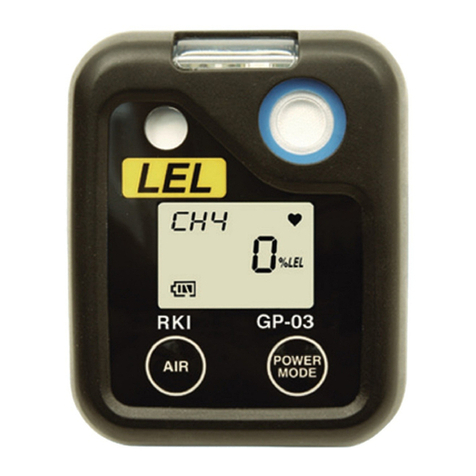
RKI Instruments
RKI Instruments 03 Series Operator's manual
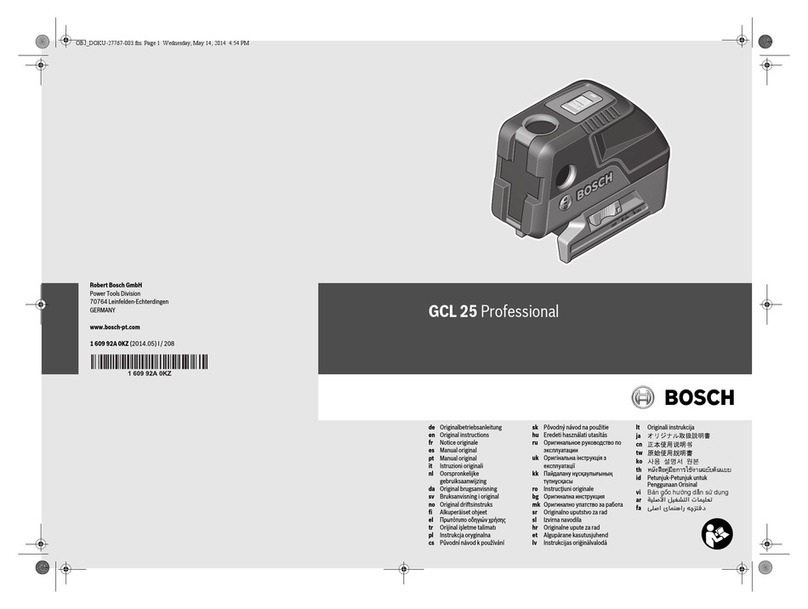
Bosch
Bosch GCL 25 Professional Original instructions

ATI Technologies
ATI Technologies Scorpion X2 installation instructions
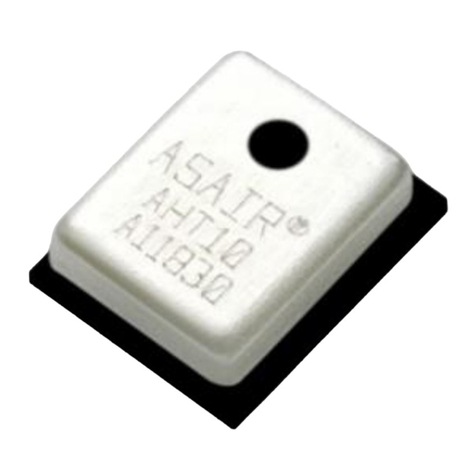
ASAIR
ASAIR AHT10 Technical manual
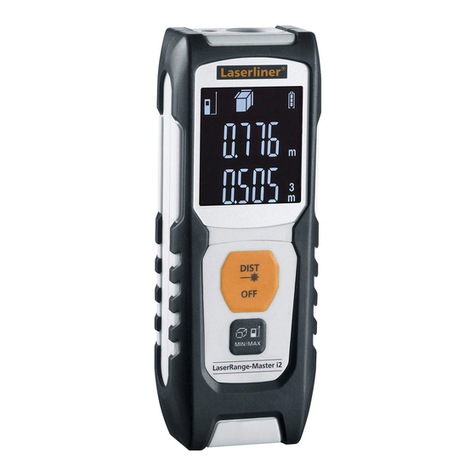
LaserLiner
LaserLiner LaserRange-Master i2 manual

Metso
Metso Nordtrack S Series instructions
